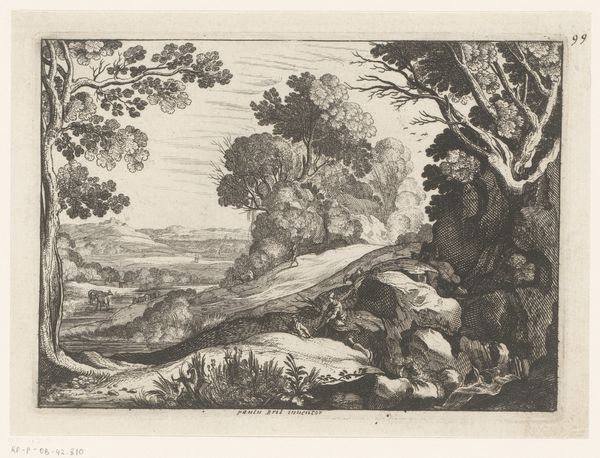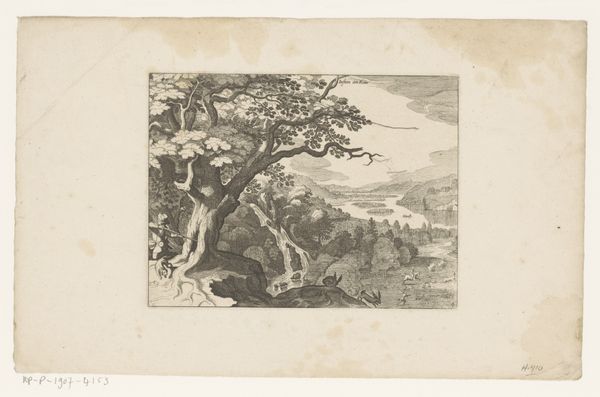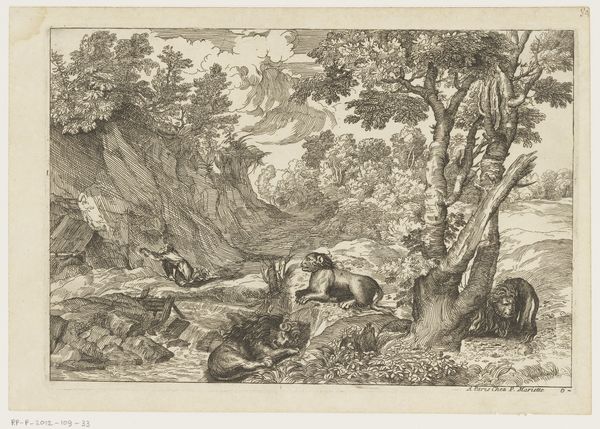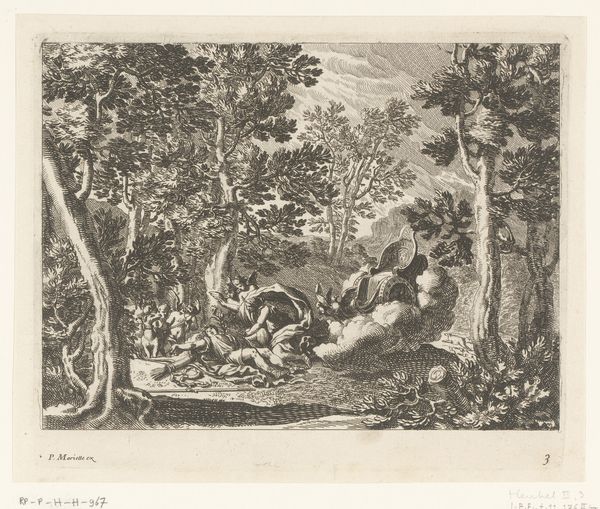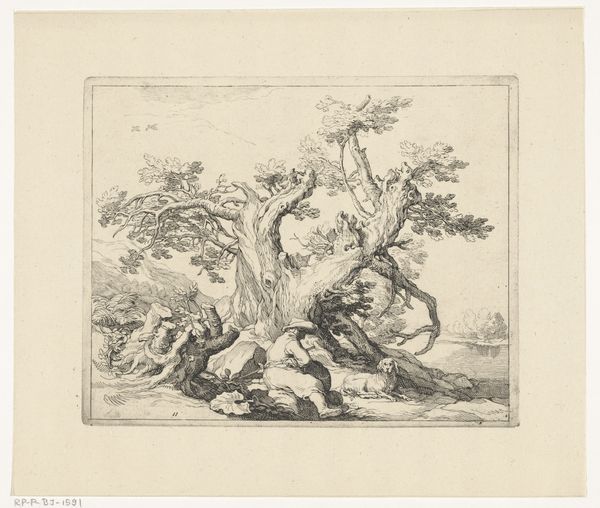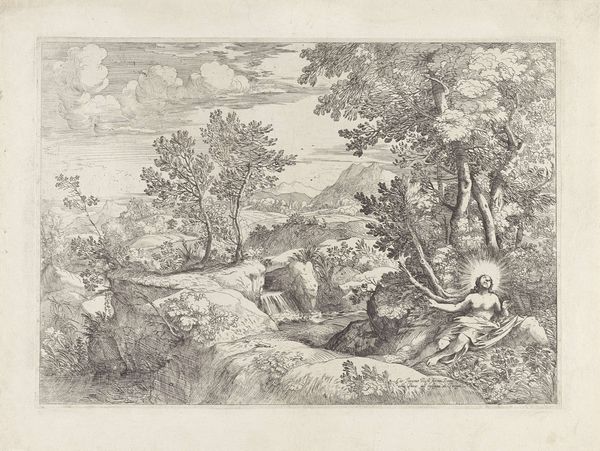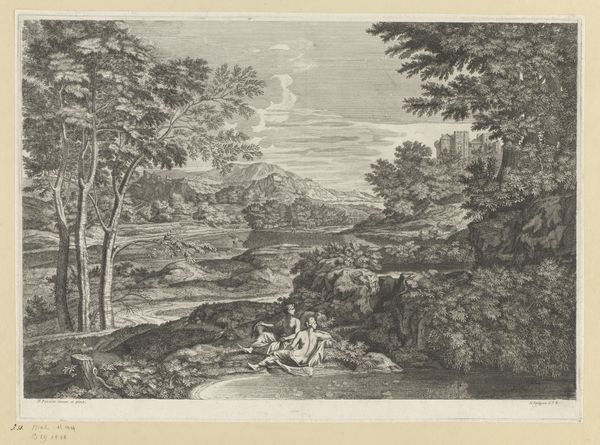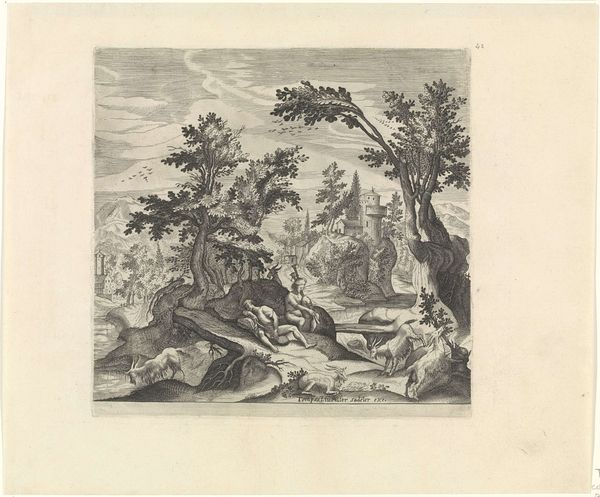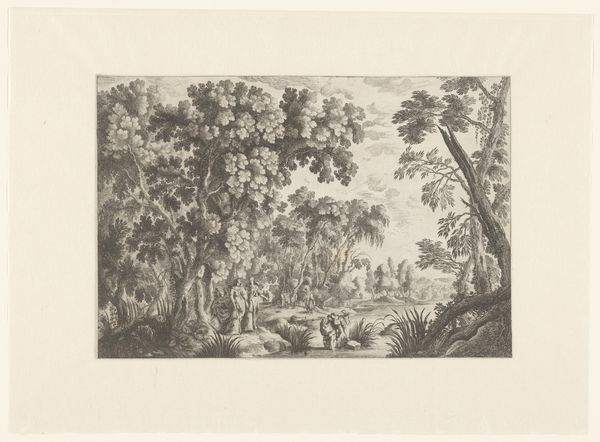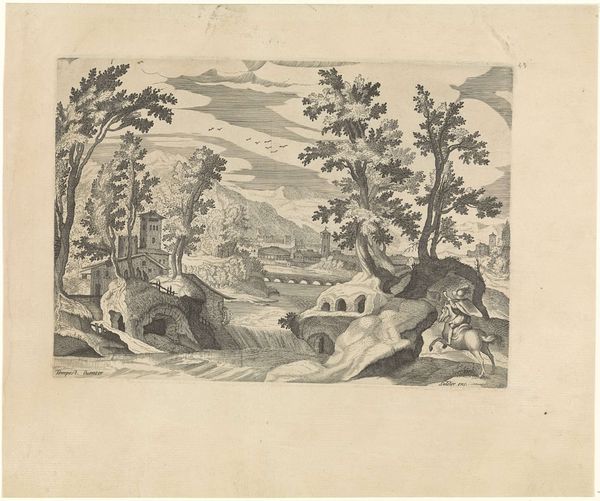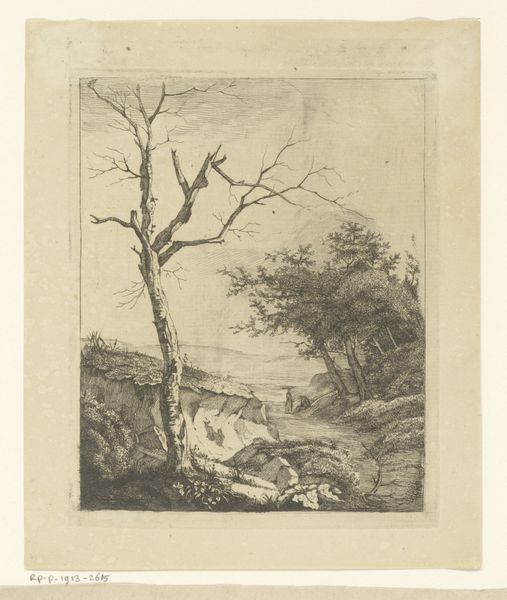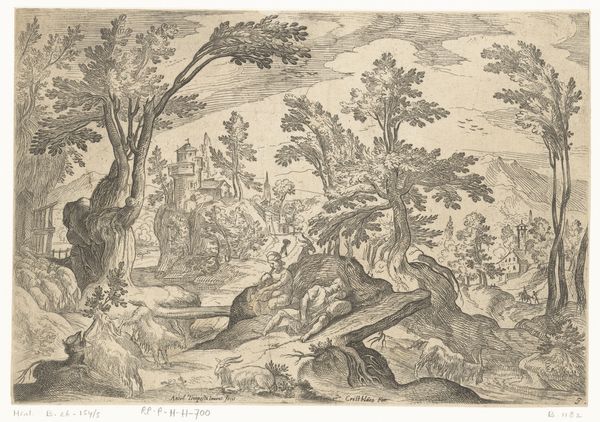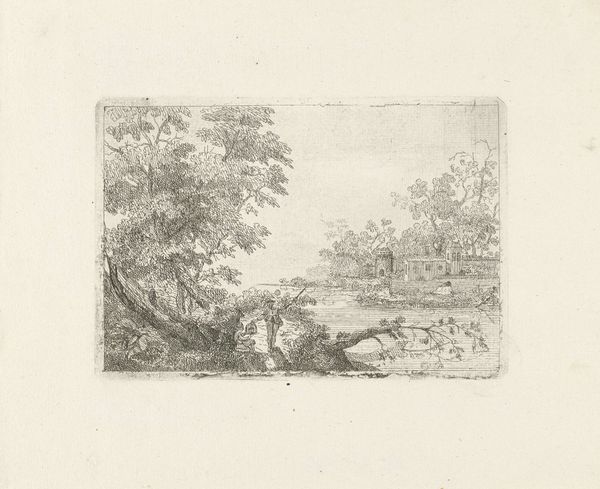
print, etching
#
dutch-golden-age
# print
#
etching
#
landscape
#
genre-painting
Dimensions: height 101 mm, width 127 mm
Copyright: Rijks Museum: Open Domain
Editor: This is "Heuvellandschap met een ezelhoeder," or "Hilly Landscape with a Donkey Driver," an etching made sometime between 1640 and 1698. The detail is so intricate, considering it's a print. What strikes you most about this work? Curator: The etching process itself is paramount. Consider the labour involved: the careful preparation of the metal plate, the acid-resistant ground applied, the precise drawing with a needle, the corrosive bath, and finally, the printing itself. Each step dictated by materials and methods. How does this focus on production affect our reading of the imagery, do you think? Editor: Well, knowing the work involved certainly shifts my focus. I was initially drawn to the scene itself – a figure moving through nature. But now I think about the labor... does it connect the landscape to the lives of ordinary people in a different way? Curator: Exactly. The print medium democratizes art. It removes the singular aura of a unique painting and makes the image reproducible, distributing it widely, impacting its social relevance, and its subsequent interpretation. Was the “original” of value here, or the copy available for broader engagement and consumption? How does its place in a collection impact the value of similar printed works? Editor: I hadn’t considered the societal impact of printing in that way. So, it’s not just about what’s depicted, but how accessible that depiction becomes because of the medium itself. The social life of art! Curator: Precisely! Think of the accessibility –an artist selling unique works compared to printing a popular work to make accessible in households throughout a particular era of culture. The difference lies in their consumption. Now, when you see it, are you reminded of “high art” in some traditional sense? Or are you connecting more with craft and labour? Editor: It's definitely changed my perspective. Before, it felt like a quaint landscape. Now, I see the print as an artifact of its time, reflective of a shift in the art world toward broader accessibility and a new kind of appreciation for labor. Curator: Agreed. We began appreciating and engaging with artistic value via material consumption. That tells a particular social narrative.
Comments
No comments
Be the first to comment and join the conversation on the ultimate creative platform.
